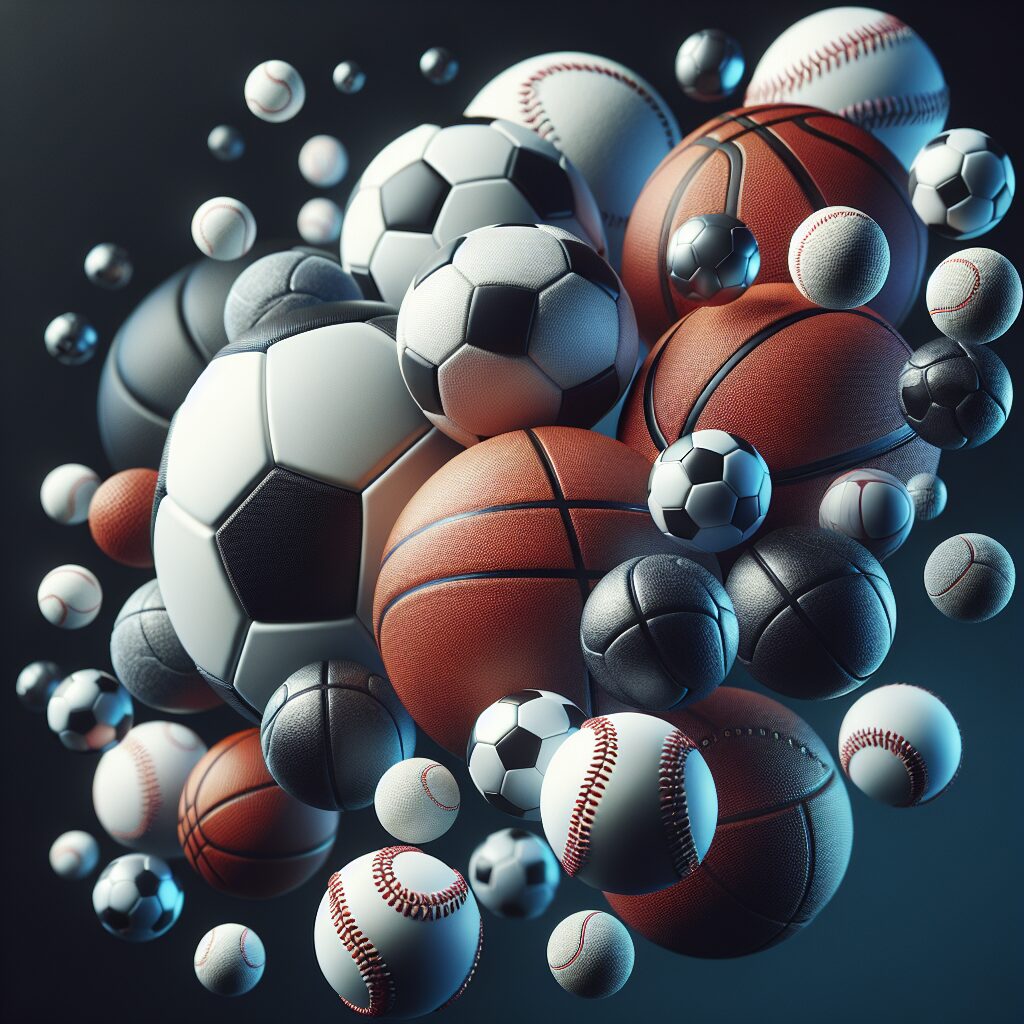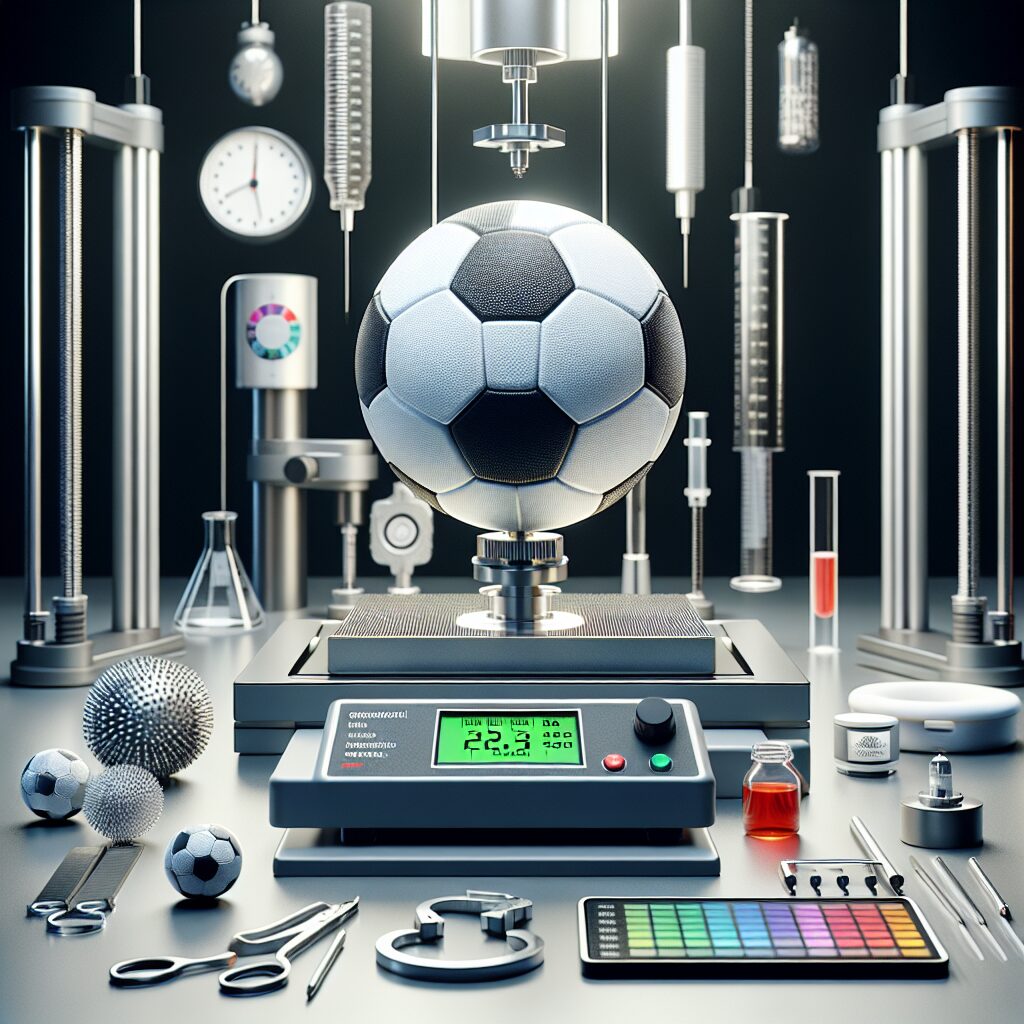Performance Standards: Elevating the Game with Quality Balls
In the world of sports, the right equipment can make all the difference. From tennis to basketball, the quality of the balls used can have a significant impact on the overall performance of the game. Performance standards encompass a set of guidelines and specifications that ensure the consistent quality and performance of sports balls. These standards not only guarantee a level playing field but also elevate the game to new heights.
When it comes to sports balls, performance standards play a crucial role in maintaining fairness, accuracy, and safety. These standards define specific criteria for factors such as size, weight, bounce, and durability, ensuring that each ball used in a game is uniform and reliable. By adhering to these standards, athletes can trust that the balls they are using will perform consistently and accurately, allowing them to focus on their skills and strategy without any undue advantage or disadvantage.
The implementation of performance standards has revolutionized the world of sports. It has not only enhanced the quality of gameplay but has also paved the way for technological advancements in ball manufacturing. By setting specific criteria, performance standards have fueled the development of innovative materials and construction techniques, resulting in balls that offer improved performance, precision, and longevity. As a result, athletes now have access to balls that provide optimal grip, control, and responsiveness, enabling them to elevate their game and achieve new levels of excellence.
In the upcoming sections, we will dive into the key takeaways of performance standards. We will explore the impact of these standards on different sports, highlighting their influence on gameplay and athlete performance. From the enhanced aerodynamics of tennis balls to the consistency of basketball bounces, we will unravel the secrets behind these quality balls that have become essential in modern sports. So, let’s delve into the world of performance standards and discover how they have transformed the way we play and enjoy sports.
Key Takeaways
1. Performance standards in sports are crucial for maintaining fair competition and ensuring consistent gameplay. Manufacturers play a vital role in meeting these standards by producing quality balls that meet specific requirements.
2. The International Tennis Federation (ITF) introduced a new standard for tennis balls in 2018, known as “Stage 3.” This standard mandates specific rebound and deformation characteristics, creating a level playing field and enhancing the overall quality of the game.
3. Manufacturers face the challenge of adhering to performance standards while also catering to the preferences of players. They must strike a balance between meeting the required specifications and creating balls that offer optimal playability, durability, and feel.
4. Quality control measures, such as conducting rigorous testing protocols, are essential for ensuring that manufactured balls meet the performance standards. Using advanced technologies, manufacturers assess factors like ball compression, bounce, and flight characteristics to ensure consistent quality.
5. The collaboration between the ITF, research institutions, and manufacturers allows for ongoing advancements in tennis ball performance. By continually refining performance standards and leveraging technological advancements, the game is elevated, providing an enjoyable experience for players and spectators alike.
What are the SEO-optimized performance standards for elevating the game with quality balls?
Understanding the Importance of Performance Standards
In any sport or game, the quality of equipment plays a crucial role in determining the overall performance and level of play. Quality balls, in particular, are essential for elevating the game to new heights. Performance standards set the benchmark for these balls, ensuring optimal performance, durability, and consistency. This article delves into the various aspects of performance standards and how they contribute to enhancing the gaming experience.
The Key Components of Performance Standards
Performance standards encompass several key components that define the quality and functionality of balls used in sports. These components include:
1. Material Composition
The material used in manufacturing quality balls greatly affects their performance. Performance standards require high-quality materials that offer durability, flexibility, and appropriate bounce characteristics. Depending on the sport, materials like leather, rubber, synthetic fibers, or a combination are chosen to meet specific standards and optimize gameplay.
2. Weight and Size
The weight and size of a ball significantly impact the game’s dynamics and performance. Performance standards outline precise measurements and weight specifications to ensure fair gameplay and consistent results. Whether it’s a baseball, soccer ball, or tennis ball, adhering to these standards enables players to adapt their gameplay accordingly and enhances overall game quality.
3. Shape and Design
Performance standards also define the ideal shape and design of balls for optimal play. Characteristics like roundness, symmetry, and aerodynamics are taken into account to enhance accuracy, stability, and control during gameplay. These standards aim to provide players with balls that offer predictable and reliable behavior, contributing to an improved gaming experience.
The Impact of Performance Standards on Gameplay
Having clear performance standards for quality balls has several significant impacts on gameplay:
1. Consistency
Performance standards ensure that every ball used in a sport meets the same quality criteria. By providing consistent performance characteristics, players can rely on predictable behavior, leading to fair competition and more accurate gameplay. Consistency in ball quality enhances the fairness and integrity of the game as a whole.
2. Player Safety
Performance standards prioritize the safety of players by setting guidelines for the manufacturing of balls. By adhering to these standards, the risk of injuries due to defective or substandard balls is minimized. Quality balls designed according to performance standards offer the necessary durability and resilience to withstand the rigors of competitive play, promoting player safety.
3. Skill Development
Performance standards encourage skill development among players. When using quality balls that meet performance criteria, athletes can refine their technique, control, and precision. By having access to consistent and reliable equipment, players can focus on improving their skills and mastering the game, pushing the boundaries of their performance.
Guidelines for Optimizing Ball Performance
1. Regular Inspection and Maintenance
Ensure that the balls are frequently inspected for wear and tear. Replace damaged or worn-out balls promptly to maintain optimum performance levels.
2. Store Balls Correctly
Proper storage is crucial to preserve ball quality. Keep balls in a cool, dry place, away from direct sunlight or extreme temperatures, to prevent deterioration of materials and performance.
3. Clean Balls Properly
Keep the balls clean by using appropriate cleaning methods and products. Different sports have specific cleaning guidelines, so make sure to follow them to maintain the balls’ performance characteristics.
4. Follow Manufacturer Guidelines
Manufacturers often provide specific instructions and recommendations for maintaining ball performance. It’s essential to adhere to these guidelines to ensure optimal gameplay and prolong the lifespan of the balls.
5. Consider Game Conditions
Take into account environmental factors such as temperature, humidity, and playing surface when selecting balls. Some sports require different ball specifications based on these conditions, so choose accordingly for the best performance.
Frequently Asked Questions
1. What are performance standards for quality balls?
Performance standards for quality balls refer to the specific criteria that determine the high-level performance and durability of a ball. These standards ensure that the ball meets established quality benchmarks for different sports, providing optimal performance and gameplay.
2. How do performance standards affect gameplay?
Performance standards have a direct impact on gameplay by ensuring fairness and consistency. When balls meet the required performance standards, players can trust that the ball will behave predictably, allowing them to showcase their skills and compete on a level playing field.
3. Who sets the performance standards for quality balls?
The performance standards for quality balls are usually set by recognized governing bodies or organizations specific to each sport. These entities conduct extensive research, tests, and consultations with experts to establish the standards that ensure high-quality performance for the respective sport.
4. What are some common performance standards for different sports?
Common performance standards for different sports include factors such as size, weight, bounce, grip, aerodynamics, and durability. For example, in tennis, the International Tennis Federation (ITF) sets standards for ball size, weight, bounce, and deformation, while in basketball, the National Basketball Association (NBA) defines standards for ball circumference, weight, and bounce.
5. Do performance standards apply to recreational balls as well?
Yes, performance standards also apply to recreational balls. Although the performance standards for recreational balls may not be as stringent as those for professional or competition balls, they still ensure a certain level of quality and performance for an enjoyable recreational experience.
6. How can I identify if a ball meets the required performance standards?
To identify if a ball meets the required performance standards, look for certifications or labels from the governing bodies or organizations specific to the sport. These certifications indicate that the ball has undergone thorough testing and meets the established standards for that particular sport.
7. Are there different performance standards for different skill levels?
Yes, there can be different performance standards for different skill levels within a sport. For example, balls designed for beginners may have slightly different standards compared to balls used by professional players. This ensures that the ball’s performance aligns with the skill level of the players.
8. Can using a ball that doesn’t meet performance standards be harmful?
Using a ball that doesn’t meet performance standards might not necessarily be harmful, but it can significantly impact the quality of gameplay. Such balls may behave unpredictably, compromising the fairness of the game and potentially leading to inaccurate results or decreased enjoyment for the players.
9. Do performance standards vary globally?
Yes, performance standards can vary globally. While some sports may have internationally recognized performance standards, regional or national variations might exist based on factors such as climate, playing conditions, or tradition. It’s essential to consult the specific performance standards applicable in your region or the specific tournament you are participating in.
10. How do performance balls contribute to player development?
Performance balls contribute to player development by providing consistent and reliable performance characteristics. When players practice and compete with balls that meet the required performance standards, they can develop better technique, adapt to consistent gameplay conditions, and enhance their overall skills.
Final Thoughts
Performance standards play a crucial role in elevating the game with quality balls. By ensuring that balls meet the established benchmarks, players can rely on consistent performance, fair competition, and enjoyable gameplay experiences. Whether recreational or professional, adhering to performance standards helps create a level playing field and fosters growth and development within the sport.
Quality balls that meet performance standards not only enhance individual player skills but also contribute to the overall development and advancement of the sport itself. By investing in and utilizing quality balls that meet performance standards, players, coaches, and organizations demonstrate their commitment to excellence and ensure that the game continues to evolve and thrive.




